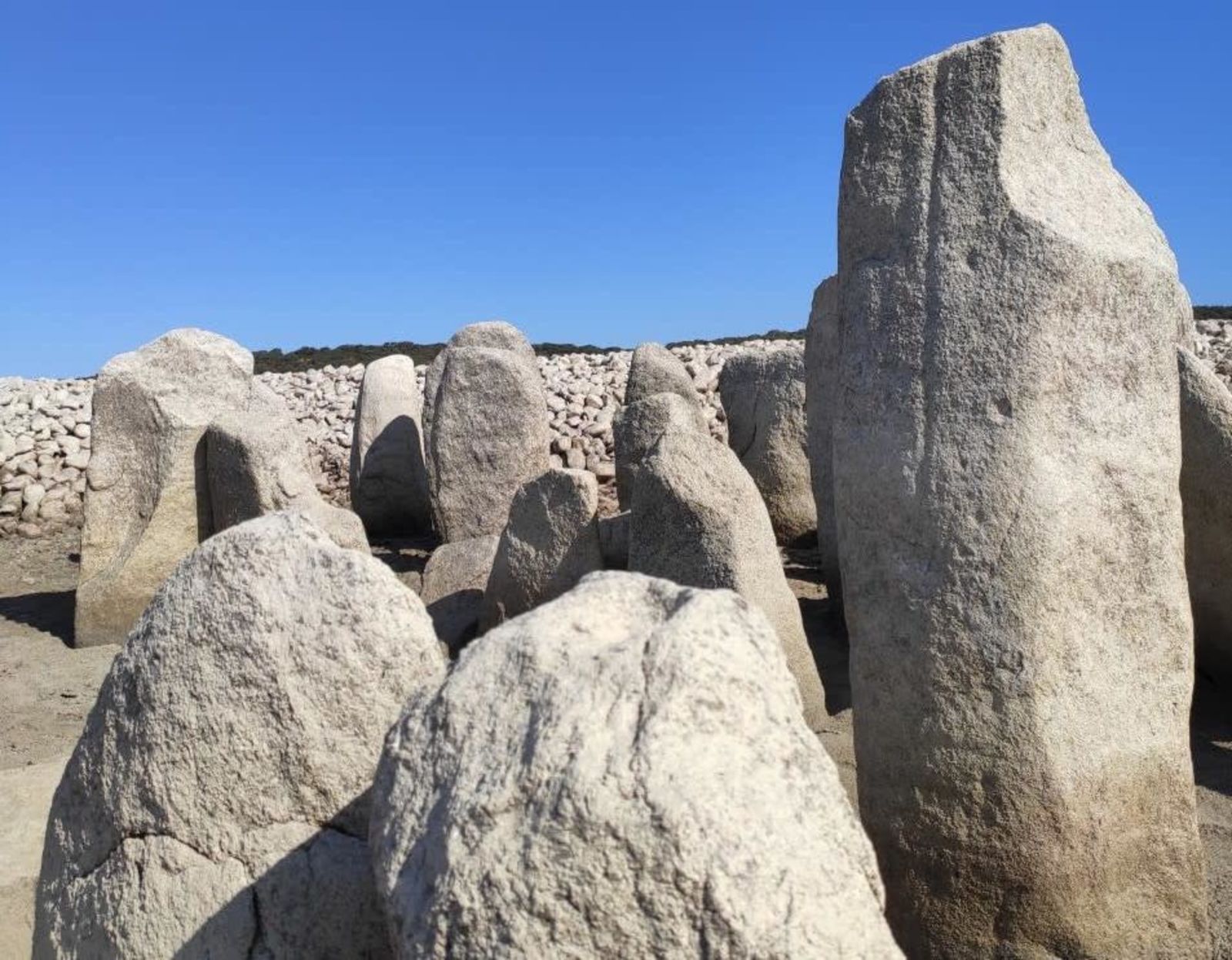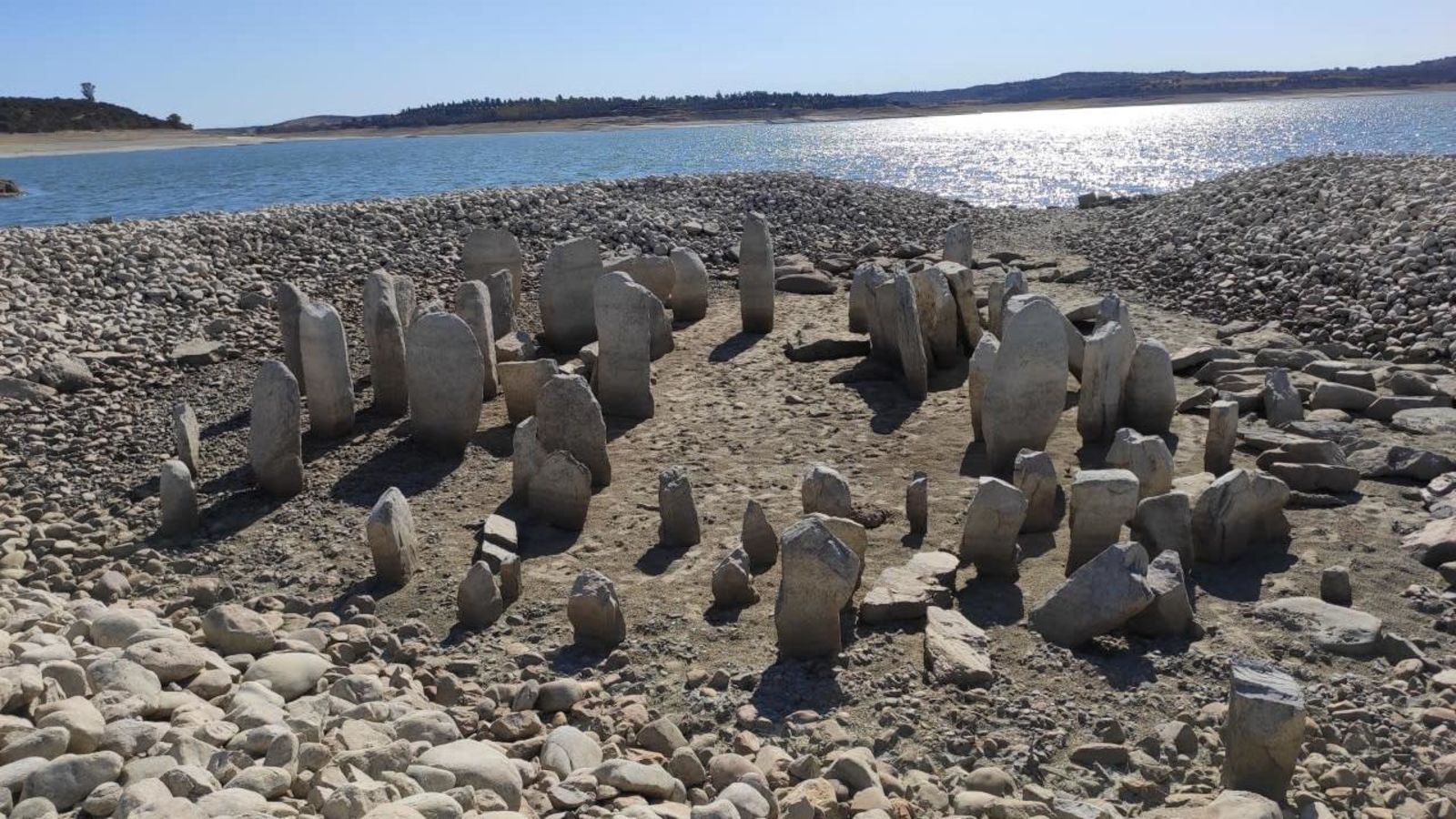
Receding water levels in Spain’s Valdecañas Reservoir has exposed a stone monument dating back to between 4,000 to 5,000 years ago. The ancient monument was once a tourist destination, but disappeared from sight when a reservoir was constructed in the 1960s. The article that follows originated with The Local, a multi-regional, European, English-language digital news publisher with local editions in Austria, Denmark, France, Germany, Italy, Norway, Spain, Sweden and Switzerland. We found it at gizmodo.com.
+++
Unusually warm weather produced drought conditions across much of Europe this past summer, including Spain. The lack of rain, while a headache for farmers and gardeners, has resulted in the complete re-emergence of an ancient megalithic site known as the Dolmen of Guadalperal, as reported in The Local.
The site is located near the town of Peraleda de la Mata, and it’s normally submerged, either completely or partially, by the waters of the Valdecañas Reservoir. Originally constructed in Francoist Spain during the 1960s, the reservoir brought fresh water and hydroelectricity to underdeveloped regions in Spain, according to NASA’s Earth Observatory. At the same time, however, the reservoir required the flooding of some inhabited areas along the Tagus River—and also the Dolmen of Guadalperal.
For nearly 60 years, the site has largely remained underwater, though the tips of the rocks have poked up through the surface when water levels are low (see, for example, this photo taken in 2012). Photos of the Dolmen of Guadalperal taken this past July, however, show the entire megalithic site liberated from its aquatic confines. So rare is the sight that locals are flocking to the Dolmen of Guadalperal to see it for themselves, reports The Local.
The site dates to around 2,000 BCE to 3,000 BCE, and it presently consists of 144 stones, some reaching as high as 2 meters (6 feet). Some stones are etched with engravings of serpents. Like England’s Stonehenge, this megalithic monument is arranged in a circle-like pattern. Its purpose isn’t entirely clear, but Angel Castaño, a member of Raíces de Peralêda—a group dedicated to the preservation of the site—suspects it served a dual function, serving as both a religious site and a trading hub, reports The Local.
Castaño and his colleagues told The Local that now’s the time, when the water is exceptionally low and the monuments are fully exposed, to relocate the site. Not only will this relocation help to preserve the stones, which are already showing signs of degradation, but it will also establish a new tourist attraction for the region, where few come to visit, Castaño told The Local.
Removing and reinstalling the monuments would require some work, such as documenting the position, angle, and depth of each stone, but a task certainly within the realm of possibility. According to Repelando, ancient Romans looted the site, and some elements were removed by a German archaeologist in the 1920s. Aside from these disruptions, most of the stones are still resting in their original position, which will allow for a faithful reconstruction and ongoing scientific investigations of the site.
The excessive heat and drought experienced across much of this Europe this summer may or may not be linked to human-induced climate change (spoiler alert: it is), but the odd juxtaposition of a warming climate and its penchant to expose previously hidden archaeological sites is not without precedent. In 2010, for example, retreating ice exposed 3,400-year-old pre-Viking hunting gear in Norway, and it’s possible that retreating ice caps also exposed Ötzi the Iceman, whose well-preserved remains were found in 1991 in the mountains along the Italian-Austrian border.
These finds, along with the recent exposure of the Dolmen of Guadalperal, are certainly fortuitous, but climate change has the potential to inflict more evil than good as far as archaeology is concerned. Research from 2017 warned that sea-level rise could threaten as many as 32,000 prehistoric and historic archaeological sites in North America, depending on how high the waters rise. So yes, climate change still sucks.
+++
Agreed!









Part of the M.O. of climate change.
I love what you guys are up too. This kind of clever work and exposure!
Keep up the great works guys I’ve included
you guys to my own blogroll.